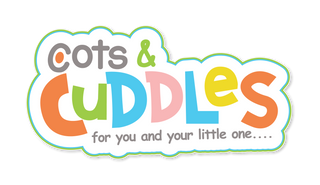Introduction:
Emotion regulation in babies refers to the process by which infants and toddlers gradually learn to recognize, understand, and manage their emotions in a developmentally appropriate manner. It involves the ability to regulate emotional responses, express emotions effectively, and modulate emotional experiences based on social and environmental cues. During the early stages of life, babies experience a wide range of emotions, including joy, sadness, fear, anger, and surprise. However, they lack the cognitive and language skills to articulate their emotions verbally. Therefore, emotion regulation in babies primarily involves non-verbal cues, such as facial expressions, body language, and vocalizations.
Babies begin to develop basic emotion regulation skills from birth, although their abilities become more refined as they grow and mature. Through interactions with caregivers, infants gradually learn to identify and respond to different emotions. As they reach toddlerhood, they become more capable of self-soothing, managing emotional distress, and engaging in social interactions that involve emotional expression and regulation. Effective emotion regulation in babies supports their overall emotional well-being and lays the groundwork for healthy social and emotional development. It enables them to navigate their emotions, form secure attachments, establish meaningful relationships, and adapt to various situations and stressors.

Emotion regulation is the ability to identify, understand, and manage emotions effectively. This fundamental skill lays the groundwork for healthy emotional development and has a significant impact on a child's social and psychological well-being in the long run. During the early stages of life, babies experience a wide range of emotions but lack the cognitive and verbal abilities to express themselves fully. This can lead to frustration, confusion, and challenges in communication for both the child and the parent. Mothers, in particular, often face unique difficulties in understanding and addressing their toddlers' emotional needs during this stage of rapid growth and development.
In this comprehensive blog, we will delve into the intricacies of emotion regulation in babies. We will explore the significance of emotion regulation for infants, highlighting its impact on social skills, relationships, and overall emotional resilience. Additionally, we will address the common problems faced by mothers as they navigate the complexities of nurturing their toddlers' emotional well-being. By gaining insights into the concept of emotion regulation and the challenges associated with it, mothers can equip themselves with practical strategies to support their little ones' emotional development. Throughout this blog, we will provide guidance and effective techniques to help mothers cultivate a nurturing environment that promotes healthy emotion regulation in their babies.
Join me on this journey as we delve into the world of emotion regulation and discover how mothers can play a crucial role in fostering emotional well-being during the formative years of their child's life. By implementing the suggested approaches and understanding the unique needs of their toddlers, mothers can lay a strong foundation for their children's emotional intelligence, resilience, and lifelong happiness.
Emotion Regulation and Its Importance

1.1: Understanding Emotion Regulation
Emotion regulation is a fundamental aspect of a child's emotional development, encompassing the ability to recognize, understand, and effectively manage emotions. During the first years of life, infants and toddlers undergo significant emotional growth, and learning to regulate their emotions becomes a vital skill.
Definition: Emotion regulation refers to the capacity to identify, comprehend, and modulate one's emotional experiences, enabling individuals to respond appropriately to different situations and stressors.
Understanding how emotion regulation works in the context of babies is crucial for parents, especially mothers, as they play a pivotal role in nurturing their child's emotional well-being during these formative years.
1.2: Significance of Emotion Regulation in Babies
Emotion regulation holds immense importance for infants, and its impact extends well beyond the early years. Here are key reasons why nurturing emotion regulation in babies, particularly those aged 1 to 2 years, is crucial:
-
Importance of early emotional development: Emotion regulation skills established during infancy lay the foundation for healthy emotional development throughout childhood and beyond. By learning to navigate and manage their emotions, babies develop a solid emotional framework that supports their overall well-being.
-
Impact on social skills and relationships: Effective emotion regulation contributes to the development of essential social skills, such as empathy, cooperation, and conflict resolution. As babies learn to understand and express their emotions appropriately, they are better equipped to form positive and meaningful relationships with others.
-
Emotional resilience and long-term well-being: Emotionally regulated children are more likely to exhibit resilience in the face of adversity and stress. They can cope with challenging situations, adapt to changes, and maintain a balanced emotional state. This resilience fosters long-term well-being and equips them with valuable skills for navigating the complexities of life.
Challenges in Emotion Regulation for Babies

2.1: Limited Vocabulary and Communication Skills
- Impact of Developing Communication: During this stage of your baby's growth, their ability to communicate is still developing. Their limited vocabulary and communication skills pose challenges in expressing emotions and conveying their needs effectively.
- Frustration and Tantrums: The frustration arising from the inability to express themselves can lead to tantrums and emotional outbursts. These episodes can be overwhelming for both the baby and the mother, making emotion regulation a critical aspect to address.
- Strategies for Effective Communication: As a mother, you can employ strategies such as baby sign language, encouraging non-verbal cues, and actively listening to your baby's attempts at communication. By understanding their unique signals and responding empathetically, you can bridge the communication gap and ease their emotional distress.
2.2: Developing Self-Control and Impulse Management
- Limited Impulse Control: Toddlers between 12 to 24 months have limited impulse control, making it challenging for them to regulate their emotional reactions and impulsive behaviors.
- Promoting Self-Regulation: Establishing consistent routines and setting clear boundaries can help promote self-control and impulse management. By creating an environment that supports predictability and structure, you provide a solid foundation for your child to develop self-regulation skills.
- Encouraging Healthy Coping Mechanisms: Guiding your toddler towards healthy coping mechanisms such as deep breathing, redirecting attention, or engaging in calming activities can assist them in managing their emotions effectively. By modeling and teaching these strategies, you empower your child to navigate emotional challenges with resilience.
Nurturing Emotion Regulation in Babies

3.1: Responsive Parenting and Emotional Availability
Emotionally responsive parenting serves as a cornerstone for nurturing babies' emotion regulation skills. By being attuned and responsive to their child's emotional cues, parents can establish secure attachments and foster trust. This provides a solid foundation for the child's emotional development. Emotionally available parents create a safe and supportive environment that encourages open expression of emotions, validating the child's experiences.
Implementing strategies such as active listening, maintaining eye contact, and responding with empathy allows parents to connect with their babies on an emotional level. Through this emotional availability, parents can help their little ones develop a sense of security and a strong emotional bond. This approach facilitates the child's ability to regulate emotions, as they learn that their emotions are understood and accepted.
3.2: Emotion Coaching and Validation
Emotion coaching is a powerful tool that helps parents teach their babies about emotions, enhance emotional awareness, and support effective emotion regulation. It involves actively guiding the child through their emotional experiences, acknowledging and validating their feelings. By providing a safe space for emotional expression, parents can help their babies understand and navigate their emotions more effectively.
To practice emotion coaching, parents can start by labeling and validating their child's emotions. Using simple, age-appropriate language, parents can help their babies identify and understand their feelings. For example, if a baby is upset, a parent might say, "I see that you're feeling sad because your toy fell down." This process assists the child in recognizing and articulating their emotions, which is an important step towards regulation.
Furthermore, parents can support their babies in problem-solving and finding healthy coping mechanisms for managing difficult emotions. By offering guidance and teaching age-appropriate strategies such as deep breathing or engaging in a calming activity, parents empower their babies to develop self-regulation skills. Emotion coaching equips children with lifelong tools to navigate emotions effectively, promoting emotional intelligence and resilience.
3.3: Creating a Safe and Nurturing Environment
The environment in which babies grow and develop plays a significant role in their emotional well-being and regulation. Creating a safe and nurturing environment sets the stage for healthy emotional growth. Here are some key aspects to consider:
-
Establishing a Calm and Predictable Environment: Babies thrive in an environment that provides stability and predictability. Consistent routines and rituals can help them feel secure, reducing anxiety and facilitating emotion regulation.
-
Encouraging Sensory Regulation Through Play and Routines: Sensory experiences are essential for babies' emotional development. Engaging in age-appropriate sensory play, such as exploring different textures or listening to soothing sounds, can help babies regulate their emotions and promote self-soothing.
-
Managing Overstimulation and Stressors: Babies are sensitive to their surroundings. Minimizing exposure to overwhelming stimuli and creating a calm atmosphere can prevent overstimulation, enabling babies to regulate their emotions more effectively. Additionally, identifying and addressing potential stressors in the environment can help reduce emotional challenges.
Conclusion
In conclusion, understanding and nurturing emotion regulation in babies, is crucial for their overall development. By recognizing the challenges faced by mothers during this stage, we can provide effective support to facilitate healthy emotional well-being. Through responsive parenting and emotional availability, mothers can build secure attachments and trust with their babies. Emotion coaching becomes a powerful tool for teaching emotional awareness and regulation, allowing mothers to validate and label their babies' emotions while supporting their expression and problem-solving skills.

Creating a safe and nurturing environment is equally important. Establishing a calm and predictable atmosphere helps babies develop sensory regulation through play and routines, while managing overstimulation and stressors. By focusing on these aspects, mothers can help their babies navigate emotions, fostering resilience and emotional balance. It is essential to remember that each child is unique, and parenting strategies should be adapted accordingly. By prioritizing emotion regulation, mothers lay a strong foundation for their babies' emotional well-being, promoting healthier relationships and long-term resilience.
By embracing these strategies and investing in their babies' emotional development, mothers can support the growth of confident, emotionally resilient individuals who are better equipped to navigate life's challenges.

